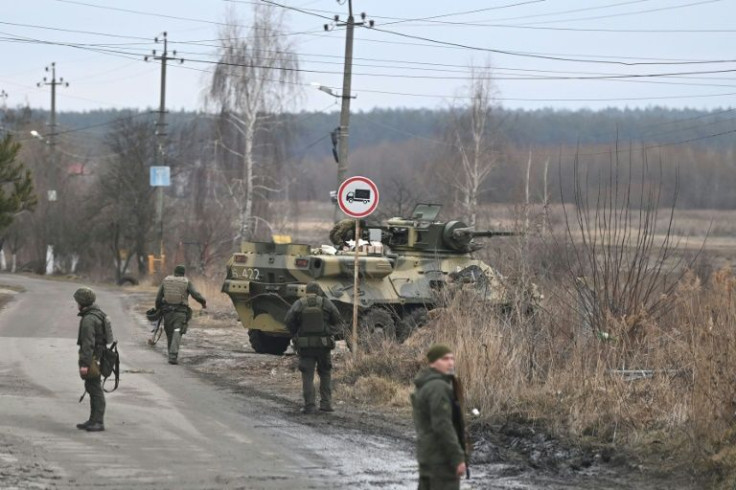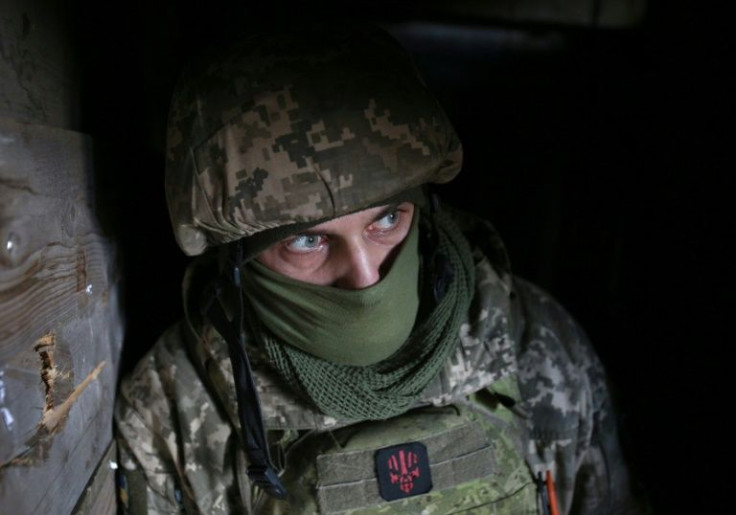'Multi-pronged' Russian Assault Aims To Encircle Ukraine Forces
Russia's military strike against its neighbour Ukraine is designed to claim air superiority before ground troops that have massed on the country's borders encircle Ukrainian forces from the north and south, experts told AFP.
The assault, after more than 150,000 Russian troops massed on Ukraine's borders in recent weeks, has been accompanied by a massive wave of air and missile strikes, while ground troops push on several fronts including towards the capital Kyiv.
The picture is of "a rapid Russian military campaign that seeks to rapidly dislocate, encircle and destroy Ukrainian forces in a multi-pronged assault", said Franz-Stefan Gady, a research fellow at the International Institute of Strategic Studies (IISS).

"Russia... will try to see a rapid conclusion of this conflict," he added.
A series of explosions were heard in the capital, with Ukraine saying Russian forces had captured an airbase on Kyiv's outskirts while helicopters were seen flying in from the north.
Attackers "look like they're on the way" towards Kyiv from Belarus, including via pontoon bridges built to the north of the exclusion zone around the former Chernobyl nuclear power plant, said Francois Heisbourg of the Paris-based Foundation for Strategic Research (FRS).
The Russian armed forces -- vastly superior in numbers of armoured vehicles and especially air power -- said they had destroyed 74 Ukrainian military installations including 11 airbases and anti-aircraft systems.

Russian strikes also hit Kramatorsk, site of the Ukrainian military headquarters for the region, Kharkiv, the country's second-largest city near the frontier, Black Sea port Odessa and Mariupol, the city closest to the initial frontline.
Thursday's "Russian textbook" attack began with "a phase of preparing the battlefield... known as 'shaping'", a senior French military officer said on condition of anonymity.

By "neutralising all anti-air defences and airbases, eliminating electronic warfare equipment... they're in the process of seizing air superiority before ground manoeuvres," the officer added.
"With Russia in total control of the skies, the Ukrainians are in an impossible military situation," added Heisbourg.
Along with air superiority, Moscow could be trying to paralyse its neighbour's digital communications, with multiple websites of banks and ministries taken offline by so-called distributed denial of service (DDOS) attacks from Wednesday afternoon.
Kyiv has blamed Russian operatives for the cyberattacks, which Moscow has denied.

The senior French officer said that once air superiority was assured, "in the coming hours we'll see bridgeheads being taken, especially with airborne troops, and large-scale manoeuvres coming from Belarus, Crimea and the east."
Russia is "on course to occupy all of Ukraine", he predicted.
And with such a large share of his forces committed, President Vladimir Putin's "calculus is that NATO is not going to intervene", Gady said.
"If he had really feared an attack on Russian territory by NATO or by any other Western country, he would not have done this."
Sunny weather and firm, dry ground present the perfect conditions for both Russian aircraft and armoured vehicles to operate.
Multiple ground offensives, including from Belarus to the north and Crimea to the south, will likely aim to encircle the bulk of Ukrainian forces, which had been concentrated along the existing "line of contact" with two breakaway pro-Russian republics in the Donbas region.
"It's like a 21st-century version of the major European wars of the 20th century," especially World War II, Heisbourg said.
Russian troops "will attack the Ukrainian troops in their trenches from the rear, who will have no other option but to give up after selling their lives dearly", Heisbourg added.
But the attacking forces will be leery of engaging in street battles in Ukraine's cities.
"These types of military operations are extremely costly, they're man-intensive and also can be bloody," said Gady.
"If they do want to force the Ukrainian government into submission, I think they might actually lay siege to some of the cities... to force a political solution," he added.
As for the Ukrainians, they could drag out the conflict "if they are able to re-establish interior defensive lines and if they maintain their fighting morale," Gady said.
"Having said that, the chances for this to happen... at this moment are fairly small."
© Copyright AFP {{Year}}. All rights reserved.





















